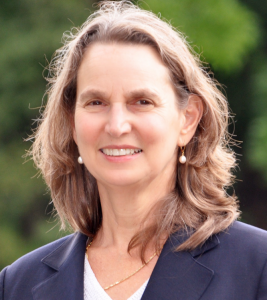A Chorus of Concerns About the Breakdown of Our Primary Care System
By Barbra G. Rabson
(May 2023)
 It was almost four years ago when I first wrote of my concerns about the future of primary care in Massachusetts. This was on the heels of ground-shaking reports indicating that there was a national decline in primary care visits between 2008 and 2016, and that primary care was suffering from chronic underinvestment. At the same time, colleagues were expressing concern that primary care’s value was being disrupted by new entrants. And then the destructive COVID-19 pandemic struck with its devastating impact on primary care.
It was almost four years ago when I first wrote of my concerns about the future of primary care in Massachusetts. This was on the heels of ground-shaking reports indicating that there was a national decline in primary care visits between 2008 and 2016, and that primary care was suffering from chronic underinvestment. At the same time, colleagues were expressing concern that primary care’s value was being disrupted by new entrants. And then the destructive COVID-19 pandemic struck with its devastating impact on primary care.
Since then, things have only gotten worse. A growing body of evidence and urgent calls for change in the past four years have documented the weakened state of primary care and raised awareness about the tremendous challenges we are facing. Here are some examples:
- The National Academy of Science, Engineering and Medicine released a report entitled “Implementing High Quality Primary Care: Rebuilding the Foundation of Health Care.” Of particular note is the authors’ claim that “primary care is the only part of the health care system that results in longer lives and more equity.” As such, it is a “public good” that “needs strong advocacy, organized leadership, and public awareness.”
- The California Health Care Foundation published a report outlining the essential role primary care plays in health equity. The preventive and management services primary care provides, it says, are “important for all people but especially for elderly and economically marginalized groups that experience the highest burdens from preventable illness, chronic disease, and negative outcomes associated with unmanaged, uncontrolled diseases.”
- MHQP in partnership with CHIA launched the first dashboard of its kind to measure the health of primary care in Massachusetts. The first wave of data revealed a grim picture: less than 8% of overall healthcare spending goes to primary care and that investment is declining; over a third of primary care physicians in Massachusetts are age 60 and older and that percentage is increasing; more than a third of residents state they had trouble accessing healthcare in the last 12 months and that percentage is increasing; and there were substantial racial and ethnic disparities in access to and utilization of primary care.
- In their coverage of the primary care dashboard, the Boston Globe received so much feedback from readers that they launched their own survey to hear from the public about their challenges with accessing primary care. They share some of these stories in a new Boston Globe television story entitled “A shortage of primary care physicians is leading to longer wait times and overcrowding in the ER.” Katherine Gergen Barnett and I also penned a Boston Globe editorial about the importance of the dashboard.
- The Milbank Fund released a national primary care scorecard that found: the United States is systemically underinvesting in primary care; the primary care physician workforce is shrinking and gaps in access to care appear to be growing; too few physicians are being trained in community settings, where most primary care takes place; and there is almost no federal funding available for primary care research (less than 0.2% of NIH research dollars goes to primary care research).
- Atul Gawande published an opinion essay in the New York Times entitled “The Aftermath of a Pandemic Requires as Much Focus as the Start,” in which he points to remarks from the Director-General of the World Health Organization, calling on countries “to make a radical reorientation of their health systems toward primary care.” “This is how we will make a real recovery from the pandemic — and be prepared for the next one,” says Gawande. “And it is the only path we have back to a world of longer and healthier lives.”
- Asaf Bitton and Bruce Landon created a typology for tracking the many new entrants to the market providing primary care services. The authors state that “policy makers and payers must closely monitor the extent to which additional resources directed toward primary care are supporting additional or new partner organizations with an as-yet-unproven benefit, which could end up diverting much needed resources from traditional primary care.” CVS’s recent acquisition of Oak Street Health, a Medicare-focused primary care player for $10.6B, may be an example of what these authors are highlighting.
- Don Berwick recently authored an article entitled “Salve Lucrum: The Existential Threat of Greed in US Health Care,” where he states “no sector of US health care is immune from the immoderate pursuit of profit, neither drug companies, nor insurers, nor hospitals, nor investors, nor physician practices.” The greed Dr. Berwick describes “poses an existential threat to a sustainable, equitable, and compassionate health care system.” In this context, it’s worth noting that, as an increasing number of primary care practices are being bought by large for-profit corporations, United Health Group’s Optum is now the largest employer of physicians in the country.
- Kevin Grumbach recently published an article entitled “Forging a Social Movement to Dismantle Entrenched Power and Liberate Primary Care as a Common Good.” Dr. Grumbach notes that “the state of family medicine and primary care in the United States is precarious, and that family physicians and their allies should not expect different policy outcomes without adopting a different theory of change and tactical approach to reform. This restructuring should take the form of a publicly financed system of universal coverage for direct primary care, he says, with a minimum of 10% of total US health spending allocated to Primary Care for All.”
This chorus of voices underscores our shared concern about the fragility of primary care. We have made some progress over the past four years to better understand the challenges we face. But we need to recognize that primary care, the foundation of our healthcare system, is in crisis. We need to act now or there will be dire consequences.
We can’t keep doing the same things and expect a different outcome. Dr. Grumbach posits that “the path to well-supported primary care will not be found in taking comfortable roads that, in the past, never arrived at their desired destination.” I couldn’t agree more. I also believe that we will only find that path by working together — providers, payers, patients, employers, policymakers, and others. Let’s all commit to doing whatever we can to get primary care back on steady ground.
